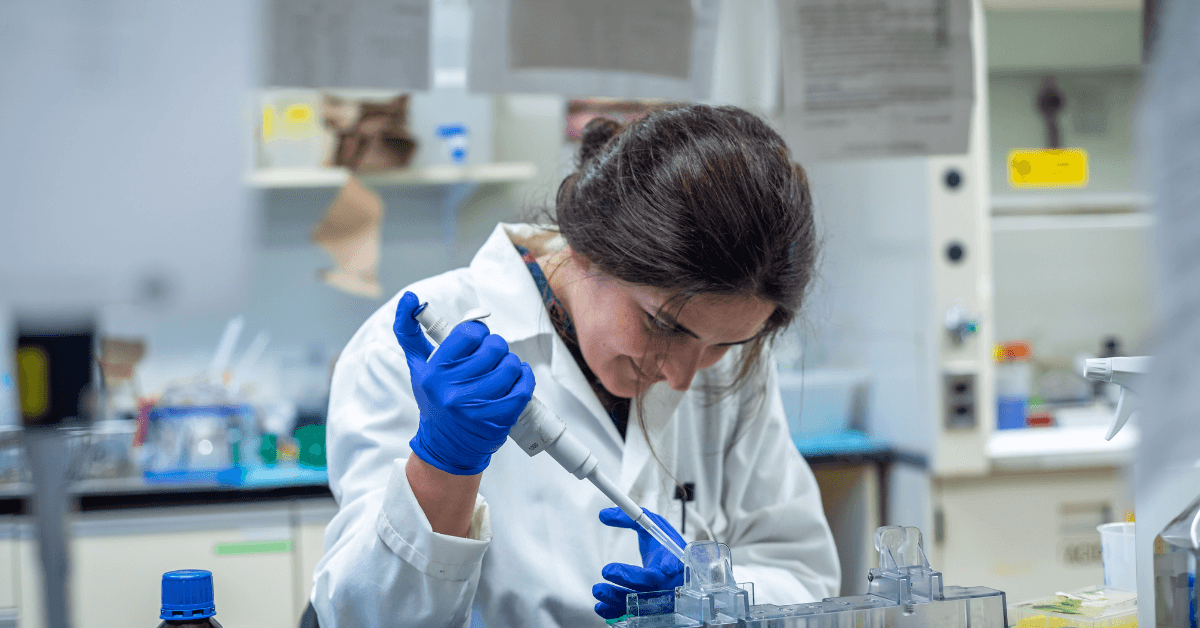Innovations in Tissue Engineering: Creating the Medical Future
By combining biology, engineering, and medicine, tissue engineering is transforming healthcare. Tissue Engineering Innovations-Today, scientists create functioning tissues to generate replacement body parts, test medications safely, and mend injured organs. Let’s examine the revolutionary developments that are changing this ever-evolving field and their practical implications.
1. Overview of Tissue Engineering: Uniting Medicine and Science
Tissue engineering creates biological replacements by combining bioactive chemicals, scaffolds, and cells. These alternatives preserve, enhance, or restore tissue function. Engineered tissues, as opposed to conventional transplants, lower the risk of rejection and donor scarcity. Using developments in 3D printing, stem cells, and biomaterials, researchers give priority to patient-specific treatments.
The need for tissue engineering in chronic diseases may propel the global market to surpass $26 billion by 2025. Here, innovations have the potential to revolutionize medication research, wound healing, and organ transplantation. We’ll then explore the technologies that enable this.

2. Advances in Bioprinting: Biology and Precision Collide-Tissue Engineering Innovations
In bioprinting, live cells are layered into intricate structures using 3D printers. To recreate human tissues like skin, cartilage, and heart valves, scientists create digital blueprints. Businesses such as Organovo have already bioprinted liver tissues for drug testing.
Multi-material printers that process hydrogels and cells at the same time are recent advances. These printers replicate the circulatory networks and tissue densities found in nature. Harvard researchers recently printed kidney tissues with functioning blood arteries. Lab-grown organs are getting closer thanks to such advancements.
Additionally, doctors may now print skin grafts directly onto wounds thanks to portable bioprinters. This invention expedites the healing process for diabetic ulcers and burn sufferers. Because of its adaptability, bioprinting will always be a vital component of tissue engineering.
3. Developments in Stem Cells: Unlocking the Potential for Regeneration
Because of their capacity for self-renewal, stem cells serve as the cornerstone of tissue regeneration. Reprogrammed from adult cells, induced pluripotent stem cells (iPSCs) circumvent the moral dilemmas associated with embryonic cells. These days, scientists can develop iPSCs into insulin-producing cells, neurons, and cardiomyocytes.
Japanese researchers used iPSCs to grow functional liver buds, which they then transplanted into mice suffering from liver disease in 2023. The buds’ effective integration demonstrated the possibility of using them in human treatments. Researchers are also conducting clinical studies for the treatment of diabetes using pancreatic cells produced from stem cells.
CRISPR gene-editing techniques further improve stem cell applications. To increase cell survival or target certain areas, scientists alter genes. These modifications tailor treatments for hereditary conditions such as muscular dystrophy.
4. Smart Biomaterials: Developing Scaffolds That Respond-Tissue Engineering Innovations
Scaffolds offer structural support and direction for cell development. These days, smart biomaterials imitate the natural tissue surroundings by reacting to pressure, pH, and temperature. For example, temperature-sensitive polymers provide stable frameworks for cartilage regeneration when they harden in response to body heat.
Growth factor-infused hydrogels encourage nerve regeneration in spinal injuries. Recently, a group from MIT created a light-responsive hydrogel that can deliver medications as needed. In the meantime, scaffolds made of graphene conduct electricity and help mend heart tissue.
Biodegradable scaffolds are also becoming more popular. Once new tissue has formed, materials such as polylactic acid dissolve safely. This process lowers the danger of inflammation and does away with the need for follow-up operations.

5. Regenerative Medicine Applications: Healing Beyond Boundaries-Tissue Engineering Innovations
Burns, joint injuries, and corneal injuries are already treated with tissue engineering. Skin grafts made in a lab, like Epicel®, enable people with severe burns to heal their skin more quickly. Similarly, people with osteoarthritis can move again because of cartilage implants made by firms like Vericel.
Heart patches implanted with cardiomyocytes repair damaged cardiac tissue after a heart attack. These patches boost cardiac function by 30 to 50%, according to early experiments. Furthermore, children with spina bifida who have bioengineered bladders implanted continue to function correctly for years after the procedure.
Future goals include brain tissue restoration and spinal cord regeneration. Neural networks that were 3D printed by UC San Diego researchers helped paralyzed rats regain their ability to walk. Such achievements demonstrate the enormous promise of regenerative medicine.
6. Transforming Drug Testing: More Secure, Quick, and Intelligent
For medication trials, engineered tissues offer human-like models, which minimize animal experimentation and increase precision. Liver chips with living cells predict drug toxicity more accurately than conventional techniques. By simulating asthma episodes, lung-on-a-chip technology enables researchers to efficiently evaluate inhalers.
Research on cancer also benefits. Tumor models created from patient cells enable personalized medication screening. A Harvard team discovered a potential immunotherapy combo in 2022 using modified breast cancer tissue.
Tissue models are currently used by pharmaceutical behemoths like Pfizer and Roche to expedite the drug development process. This change expedites the release of life-saving therapies and saves billions of dollars.
7. The Search for Laboratory-Grown Organs: Addressing Supply Deficits
In the United States alone, more than 100,000 patients are waiting for organ transplants. Organs produced in a lab might remove the need for waiting lists and rejection concerns. Although it is not yet functioning, researchers at Tel Aviv University 3D printed a heart using human cells and blood arteries.
Vascularization, or the development of blood vessel networks, must advance. In a 2023 study, complex vascular pathways were carved into liver tissue using sacrificial 3D printing. Decellularization, on the other hand, removes cells from donor organs, leaving collagen scaffolds for patient cell repopulation.
lthough there are still obstacles to overcome, scientists predict that functioning lab-grown kidneys and hearts might be available in clinics in ten to fifteen years.
8. Overcoming Obstacles: Expanding and Maintaining Security-Tissue Engineering Innovations
Tissue engineering still confronts challenges despite advancements. The difficulty of vascularizing dense tissues limits the size of organs. It is still possible for scaffolds or alien cells to trigger immunological reactions. Clinical clearances are sometimes delayed by slow regulatory processes.
Industrial standardization ensures consistency. Automated bioreactors address this by tracking nutrition levels and cell development. Solutions are accelerated by industry-academia collaborations, such as the NIH’s Tissue Chip Program.
Another objective is cutting costs. Custom biomaterials and bioprinters are still costly. Startups like Aspect Biosystems, on the other hand, want to democratize access by providing modular, reasonably priced solutions.

9. Ethical Aspects: Juggling Creativity and Accountability
There are ethical concerns with tissue engineering. Is it OK to genetically modify tissues beyond their inherent potential? Who owns bioengineered products—inventors, businesses, or patients? The fear of “playing God” must be addressed via public education.
Fair access must be guaranteed by regulations. If only affluent people could purchase engineered medicines, high costs might exacerbate healthcare inequities. These innovations will become more accessible with the support of transparent rules and subsidies.
10. Tissue Engineering’s Future: What Comes Next?
Emerging technologies like artificial intelligence and nanotechnology will drive the field. AI systems mimic cell activity to create the best scaffolds. Nanobots might directly administer growth factors to injured tissues.
Research conducted in space also provides special insights. The ISS’s microgravity settings now allow for the production of delicate tissues that are challenging to 3D print on Earth. These trials may improve techniques for use on Earth.
The ultimate goal of tissue engineering is to eliminate organ shortages and customize care for each patient.
Conclusion: A New Age of Potential in Medicine
Innovations in tissue engineering are changing the medical landscape. These technologies, which range from lab-grown organs to bioprinted skin, offer longer, healthier lives. Although there are still obstacles to overcome, advancement will be fueled by multidisciplinary cooperation and moral leadership.
Keep up with research updates and clinical trials to stay informed. The future aims to create something better, not just replace the broken.
FAQ:
What are the latest innovations in tissue engineering?
- New inventions include smart biomaterials that change based on temperature or pH, CRISPR-enhanced stem cells for personalized treatments, and 3D-printed tissues with blood vessels. Additionally, researchers created portable bioprinters for skin regeneration on-site.
What are the advances in tissue engineering?
- Biomaterials designed by AI, decellularized scaffolds for organ repair, and working organoids for drug testing are all examples of progress. To improve the treatment of spinal cord injuries, researchers are increasingly incorporating neural networks into synthetic tissues.
How does tissue engineering technology work?
- To replicate natural tissues, engineers blend growth factors, scaffolds, and cells. Bioreactors mimic physiological conditions to develop tissues, while 3D printers accurately layer bioinks. Gene editing can modify cells to perform specific tasks.
What is the new technology in tissue engineering?
- Multi-material bioprinters, graphene-based scaffolds for heart repair, and light-activated hydrogels for drug administration are examples of emerging technology. Today, space bioprinting in microgravity produces incredibly exact tissues that are impossible to produce on Earth.
What are the trends in tissue engineering?
- Trends include AI-driven scaffold optimization, patient-specific organoids, and vascularization solutions for thick tissues. Clinical translation is accelerated by industry collaborations, and fair access to bioengineered treatments is guaranteed by ethical standards.



